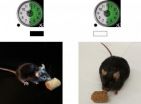(Press-News.org) Recommendations and decisions to use "least toxic pesticides" and "pesticides as a last resort" have flourished in the last decade, but according to three scientific organizations – the Weed Science Society of America (WSSA), the American Phytopathological Society (APS) and the Plant-Insect Ecosystems Section of the Entomological Society of America (P-IE ESA) – these are not the correct approaches to the pesticide component of an Integrated Pest Management (IPM) program.
The three organizations have joined to take an objective look at the problems associated with "least toxic pesticides" applied as a "last resort" and today issued the following statement:
IPM is Fundamental Wherever Pests Must Be Controlled
It is essential to practice IPM, whether managing weeds, insect pests or plant diseases ¬– on the farm, on commercial sites, on public lands, or in or around the home. Key components of IPM include making the habitat unfavorable for pests, excluding pests where feasible, using proper sanitation practices, monitoring the infestation level, knowing the pest tolerance level for the specific situation and implementing the necessary management practices.
Judicious use of pesticides is a critical component of many IPM programs. Judicious (careful) use refers to various practices – following all label directions and making all appropriate stewardship decisions required in the particular situation. This includes applying a product registered for the target pest(s) after accurate pest identification, and consideration of the level of infestation and the potential for economic, health or other negative pest impacts. Careful use extends beyond pesticides to household chemicals, automobiles, medicines, alcoholic beverages, and countless other products that are part of our daily lives.
The Problem with Selecting Only "Least Toxic Pesticides"
"Least toxic" implies there are pesticides available for every pest spectrum that are least toxic to everything else. This is not true. The toxicity of a pesticide depends on what is being evaluated – short-term or long-term toxicity – and who or what may be affected (e.g. applicators, farmworkers, livestock, wildlife, pets, birds, fish, beneficial insects, earthworms, sediment-dwelling organisms, crops). It is also important to remember that toxicity is not the same as risk, which is dependent on both toxicity and exposure.
The risk associated with the use of pesticides and other chemicals is managed by establishing safe exposure levels based on the toxicity specific to each product. Assigning a "most" or "least" toxic rating does not equate to actual risk when the product is properly applied. For example, the label of a pesticide product that may cause skin irritation will also contain requirements for personal protective equipment that safeguards the skin, while a product that may affect fish will contain use directions, precautions and possibly even restrictions intended to protect fish. This is why the EPA-approved label instructions must be followed.
All pesticides – including those referred to as "least toxic," "organic" and "natural" – are toxic to one or more pests and possibly humans and other organisms as well. Use of these terms can lead to false security regarding the need for careful handling of pesticides and proper environmental stewardship.
Over-reliance on a "least toxic" pesticide can cause new problems. For example, glyphosate is considered a "least toxic" herbicide choice, but overreliance on it has led to significant weed resistance problems. Over-use or misuse of any pest management tactic can cause problems – for example, cultivation to control weeds on hilly land can cause soil erosion, and excessive hand-hoeing can cause back injuries and increase the risk of skin cancer.
Often, "least toxic" products do not work as well on the pest(s), leading to the need for re-treatment with another pesticide on larger and/or harder-to-control pest infestations. This can result in higher costs, reduced control and undesirable environmental effects attributable to the pest.
The Problem with Using Pesticides Only "As a Last Resort"
"Last resort" implies that pesticides will work as well when every non-chemical control technique is attempted first. However, delaying application of a pesticide can cause buildup of the pest(s) in crops, gardens, buildings and other sites, with negative impacts on yield, quality and/or health. In fact, delaying treatment can significantly increase the ecological and economic damage to crop and non-crop areas.
Using pesticides as the last line of defense can result in a more limited choice of pesticides, as well as reduced crop tolerance, the need for higher rates, and less effective control because of higher infestation levels and/or more tolerant pest stages. For example, seedling weeds and early-stage insect larvae and diseases are usually more easily controlled than later pest stages.
Effective pesticide choices, when they are applied as a "last resort," means fewer options to rotate pesticides, which is a critical step in preventing a pest from becoming resistant to a pesticide. "Last resort" pesticide strategies may also increase the need for multiple products and higher application rates to control the pest effectively.
"Last resort" suggests pesticides are always the worst choice, which is not true. First using non-chemical techniques that are ineffective or inefficient has the potential to add to the cost of pest management, intensify the pest problem or create new problems.
Branding pesticides as the "last resort" choice certainly does not stimulate a strong public interest in funding education on their proper use. Pesticides are widely used, but discretionary federal funding of the U.S. Pesticide Safety Education Program has been eliminated in 2011 and 2012. This program is vital to educate pesticide users and dealers who must be certified to apply or sell pesticides, and to teach the public how to use pesticides safely.
There is no benefit or scientific basis to simplistic messages like "use least toxic pesticides as a last resort" for the large number of pesticide users who apply pesticides according to the label and practice good stewardship. Nor are these messages beneficial for those who neither seek training nor adequately read the label ̶ believing instead that it is safe, practical, and effective to simply choose a product considered a "least toxic pesticide" and apply it only as a "last resort." These messages hinder pesticide safety and stewardship education and practices that are in the best interest of the pesticide user, our food supply, public health and ecosystem preservation.
The WSSA, APS and P-IE ESA do not promote the use of pesticides above other pest management techniques. Pesticides should ONLY be used when needed, when risks to non-target organisms and habitats have been carefully considered, and when diligent attention will be given to following all label directions and other applicable laws. In addition, general and product-specific stewardship must always be practiced to prevent undesired effects under the particular application conditions.
Pesticides are an important component of many IPM programs for a variety of reasons. A fungicide, for example, may prevent disease, have curative effects, induce plant resistance to disease or promote plant health and yield. The most important message is to follow the label – the entire label, including all safety and other precautions – and practice good stewardship. Suggesting that only "least toxic pesticides" be used, as a "last resort," ignores the extensive research, regulatory, educational and stewardship efforts that make important pesticide tools available and define their proper and safe use in Integrated Pest Management programs.
Societies Renew Their Endorsement of IPM Definition in USDA "National Road Map for Integrated Pest Management"
No pest management-related term has been defined in so many different ways as "Integrated Pest Management." WSSA, APS and P-IE ESA strongly oppose a non-scientific approach to IPM and re-endorse the USDA National Road Map definition:
"Integrated Pest Management, or IPM, is a long-standing, science-based, decision-making
process that identifies and reduces risks from pests and pest management related strategies. It
coordinates the use of pest biology, environmental information and available technology to prevent unacceptable levels of pest damage by the most economical means, while posing the least possible risk to people, property, resources and the environment. IPM provides an effective strategy for managing pests in all arenas, from developed agricultural, residential,
and public areas to wild lands. IPM serves as an umbrella to provide an effective, all
encompassing, low-risk approach to protect resources and people from pests." (USDA National Road Map for Integrated Pest Management)
Real examples of the risks when pesticides are used only as a "last resort" and the benefits of using appropriately timed pesticides as part of an integrated pest management program, as well as common questions and answers, are available online.
###
About the Weed Science Society of America
The Weed Science Society of America, a nonprofit scientific society, was founded in 1956 to encourage and promote the development of knowledge concerning weeds and their impact on the environment. The Weed Science Society of America promotes research, education and extension outreach activities related to weeds, provides science-based information to the public and policy makers, fosters awareness of weeds and their impact on managed and natural ecosystems, and promotes cooperation among weed science organizations across the nation and around the world. For more information, visit www.wssa.net.
About the American Phytopathological Society
The American Phytopathological Society (APS) is a nonprofit, professional scientific organization. The research of the organization's more than 5,000 worldwide members advances the understanding of the science of plant pathology and its application to plant health. For more information, visit www.apsnet.org.
About the Entomological Society of America
The Entomological Society of America (ESA) is the largest organization in the world serving the professional and scientific needs of entomologists and people in related disciplines. Founded in 1889, ESA today has more than 6,000 members affiliated with educational institutions, health agencies, private industry and government. Members are researchers, teachers, extension service personnel, administrators, marketing representatives, research technicians, consultants, students and hobbyists. For more information, visit www.entsoc.org.
Scientists take objective look at terms 'least toxic pesticides' applied as 'last resort'
2012-11-12
ELSE PRESS RELEASES FROM THIS DATE:
Which U.S. Presidents Served in the Military? New Infographic from iFreedom Direct has the Answer
2012-11-12
iFreedom Direct, a dedicated VA-approved lender serving military members, celebrates Veterans Day 2012 by debuting an informative new graphic on its two company websites and Facebook page. The infographic entitled Beyond Commander in Chief features a timeline of the 44 Presidents and their terms along with 24 headshots of those who served their country in the Armed Forces before calling the White House their home.
Of course, George Washington started it all when he was named Commander in Chief of the Continental Army in 1775 -- even before being elected President. ...
Systematic incarceration of African American males is a wrong, costly path
2012-11-12
Mental health experts from Meharry Medical College School of Medicine have released the first comprehensive report on the correlation between the incarceration of African American males and substance abuse and other health problems in the United States. Published in Frontiers in Psychology on the 12th of November, the report looks at decades of data concerning the African American population rates of incarceration and subsequent health issues. The authors conclude that the moral and economic costs of current racial disparities in the judicial system are fundamentally avoidable, ...
Report offers new guidance on family involvement of child abuse case reviews
2012-11-12
Child protection professionals are to be offered new guidance on how best to involve families in the case reviews that follow the death or serious injury of a child as a result of abuse or neglect.
A report being launched today (Monday November 12) will reveal the results of a study led by experts at The University of Nottingham and commissioned by the British Association for the Study and Prevention of Child Abuse and Neglect (BASPCAN).
The research explored the personal experiences of both professionals and families to make recommendations on best practice in this ...
Early stress may sensitize girls' brains for later anxiety
2012-11-12
MADISON — High levels of family stress in infancy are linked to differences in everyday brain function and anxiety in teenage girls, according to new results of a long-running population study by University of Wisconsin-Madison scientists.
The study highlights evidence for a developmental pathway through which early life stress may drive these changes. Here, babies who lived in homes with stressed mothers were more likely to grow into preschoolers with higher levels of cortisol, a stress hormone. In addition, these girls with higher cortisol also showed less communication ...
Climate change threatens giant pandas' bamboo buffet – and survival
2012-11-12
China's endangered wild pandas may need new dinner reservations – and quickly – based on models that indicate climate change may kill off swaths of bamboo that pandas need to survive.
In this week's international journal Nature Climate Change, scientists from Michigan State University and the Chinese Academy of Sciences give comprehensive forecasts of how changing climate may affect the most common species of bamboo that carpet the forest floors of prime panda habitat in northwestern China. Even the most optimistic scenarios show that bamboo die-offs would effectively ...
It's not just what you eat, but when you eat it
2012-11-12
PHILADELPHIA - Fat cells store excess energy and signal these levels to the brain. In a new study this week in Nature Medicine, Georgios Paschos PhD, a research associate in the lab of Garret FitzGerald, MD, FRS director of the Institute for Translational Medicine and Therapeutics, Perelman School of Medicine, University of Pennsylvania, shows that deletion of the clock gene Arntl, also known as Bmal1, in fat cells, causes mice to become obese, with a shift in the timing of when this nocturnal species normally eats. These findings shed light on the complex causes of obesity ...
Using rust and water to store solar energy as hydrogen
2012-11-12
How can solar energy be stored so that it can be available any time, day or night, when the sun shining or not? EPFL scientists are developing a technology that can transform light energy into a clean fuel that has a neutral carbon footprint: hydrogen. The basic ingredients of the recipe are water and metal oxides, such as iron oxide, better known as rust. Kevin Sivula and his colleagues purposefully limited themselves to inexpensive materials and easily scalable production processes in order to enable an economically viable method for solar hydrogen production. The device, ...
A better brain implant: Slim electrode cozies up to single neurons
2012-11-12
ANN ARBOR—A thin, flexible electrode developed at the University of Michigan is 10 times smaller than the nearest competition and could make long-term measurements of neural activity practical at last.
This kind of technology could eventually be used to send signals to prosthetic limbs, overcoming inflammation larger electrodes cause that damages both the brain and the electrodes.
The main problem that neurons have with electrodes is that they make terrible neighbors. In addition to being enormous compared to the neurons, they are stiff and tend to rub nearby cells ...
Gene variations linked to lung cancer susceptibility in Asian women
2012-11-12
An international group of scientists has identified three genetic regions that predispose Asian women who have never smoked to lung cancer. The finding provides further evidence that risk of lung cancer among never-smokers, especially Asian women, may be associated with certain unique inherited genetic characteristics that distinguishes it from lung cancer in smokers.
Lung cancer in never-smokers is the seventh leading cause of cancer deaths worldwide, and the majority of lung cancers diagnosed historically among women in Eastern Asia have been in women who never smoked. ...
Detection, analysis of 'cell dust' may allow diagnosis, monitoring of brain cancer
2012-11-12
A novel miniature diagnostic platform using nuclear magnetic resonance (NMR) technology is capable of detecting minuscule cell particles known as microvesicles in a drop of blood. Microvesicles shed by cancer cells are even more numerous than those released by normal cells, so detecting them could prove a simple means for diagnosing cancer. In a study published in Nature Medicine, investigators at the Massachusetts General Hospital (MGH) Center for Systems Biology (CSB) demonstrate that microvesicles shed by brain cancer cells can be reliably detected in human blood through ...



